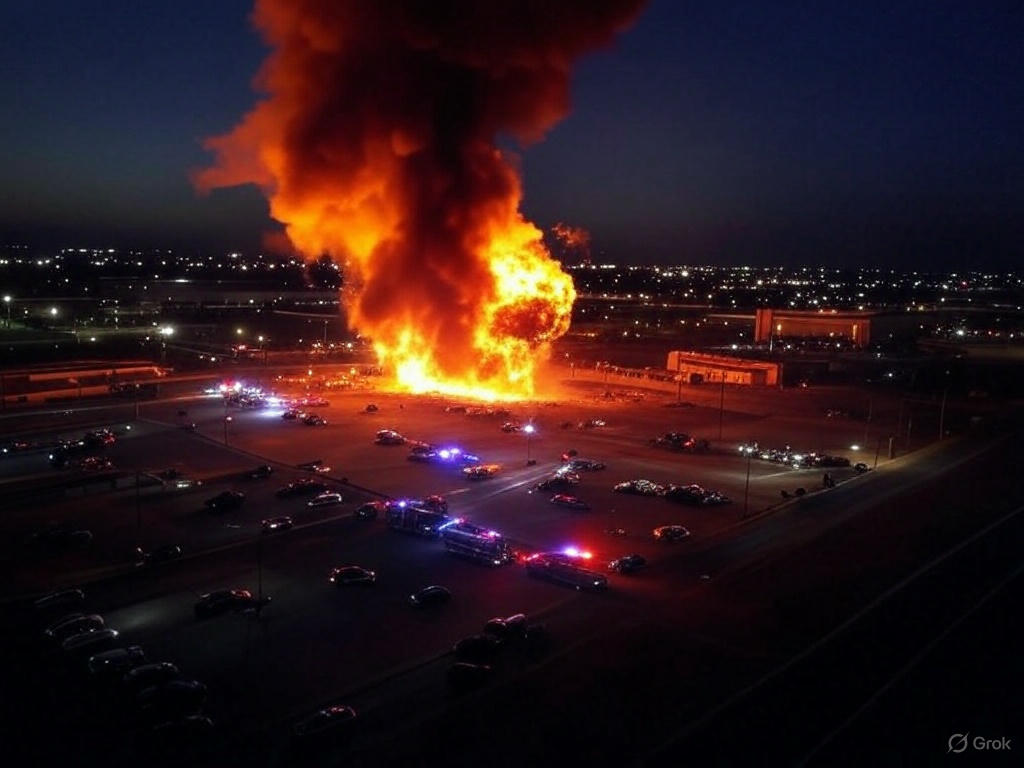Lubbock Texas Tech Explosion: A Shocking Incident in University History 2025
Introduction
The Texas Tech explosion remains one of the most shocking incidents in the university’s history. It highlighted major concerns regarding laboratory safety and sparked discussions on how research institutions should handle hazardous materials. This article delves into the details of the explosion, its causes, and the lessons learned.
Background of Texas Tech University

Founded in 1923, Texas Tech University in Lubbock, Texas, is known for its strong engineering, science, and research programs. With numerous laboratories conducting experiments, the university has been at the forefront of innovation. However, with extensive research comes the risk of accidents.
The Explosion: What Happened?
The explosion occurred on January 7, 2010, in a chemistry laboratory at Texas Tech. A graduate student conducting experiments on explosive compounds suffered severe injuries when a powerful detonation occurred. The incident sent shockwaves through the academic community, raising questions about safety protocols.
Cause of the Explosion
The student was working with nickel hydrazine perchlorate (NHP), a highly sensitive explosive compound. While preparing a sample, an unintended reaction led to a massive explosion, causing life-threatening injuries to the student handling the substance.
Injuries and Immediate Aftermath

The injured student lost three fingers, suffered burns, and had eye damage. Emergency responders arrived quickly, stabilizing the student before transporting him to a hospital. The incident prompted immediate laboratory shutdowns and safety inspections.
University and Community Response
Texas Tech officials took swift action to investigate the explosion. The university temporarily halted similar experiments and reassessed safety procedures. Students and faculty rallied around the injured student, showing overwhelming support.
Investigation and Findings
The U.S. Chemical Safety Board (CSB) conducted an in-depth investigation. The findings revealed multiple safety violations, including failure to follow proper protocols and lack of adequate training for handling explosive materials.
Safety Violations and Concerns

The investigation exposed lapses in safety measures at Texas Tech. Some key violations included:
- Failure to document chemical inventories properly
- Inadequate training for students handling hazardous materials
- Insufficient risk assessment procedures
Lessons Learned from the Explosion
As a result of the incident, Texas Tech implemented stricter safety guidelines. Changes included:
- Enhanced training programs for students and faculty
- Stricter oversight on laboratory experiments
- Mandatory safety documentation for high-risk materials
Impact on the Academic Community
The explosion had a ripple effect on academic institutions nationwide. Many universities re-evaluated their safety protocols, ensuring better compliance with research safety standards.
Legal and Financial Consequences
Texas Tech faced scrutiny from regulatory bodies and had to pay fines due to safety violations. Additionally, the university invested in safety improvements, increasing research costs.
Comparisons to Other University Accidents
Similar incidents have occurred at other universities, such as UCLA’s 2008 lab accident that resulted in a fatality. Compared to those, Texas Tech’s explosion underscored the dangers of working with energetic materials and the need for heightened awareness.
Public Reactions and Media Coverage
The explosion attracted significant media attention. News outlets criticized Texas Tech’s handling of hazardous materials, while safety advocates used the incident to push for stricter regulations in university research labs.
Preventing Future Laboratory Accidents
To prevent similar tragedies, universities should:
- Enforce strict safety training before allowing students to handle dangerous chemicals
- Implement real-time monitoring of hazardous experiments
- Encourage a culture of safety among researchers and faculty
Conclusion
The Texas Tech explosion was a wake-up call for academic institutions worldwide. It demonstrated the critical importance of laboratory safety and led to significant policy changes at Texas Tech and beyond. By learning from such incidents, universities can create a safer environment for future researchers.
FAQs
1. What was the main cause of the Texas Tech explosion?
The explosion was caused by an accidental detonation of nickel hydrazine perchlorate, a highly sensitive compound.
2. How did Texas Tech respond to the incident?
The university conducted safety reviews, implemented stricter protocols, and improved training programs for students and researchers.
3. Were there any legal consequences for Texas Tech?
Yes, the university faced fines and had to comply with new safety regulations to prevent future incidents.
4. What safety measures were put in place after the explosion?
Texas Tech introduced better training, improved risk assessments, and mandated stricter safety documentation for hazardous materials.
5. How can universities prevent similar explosions?
By enforcing comprehensive safety training, using real-time monitoring, and fostering a strong safety culture in research labs.
Share this content:




2 comments